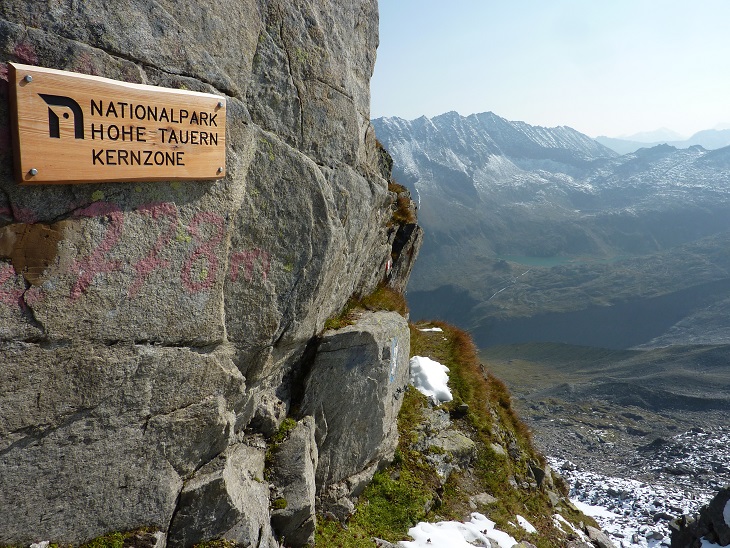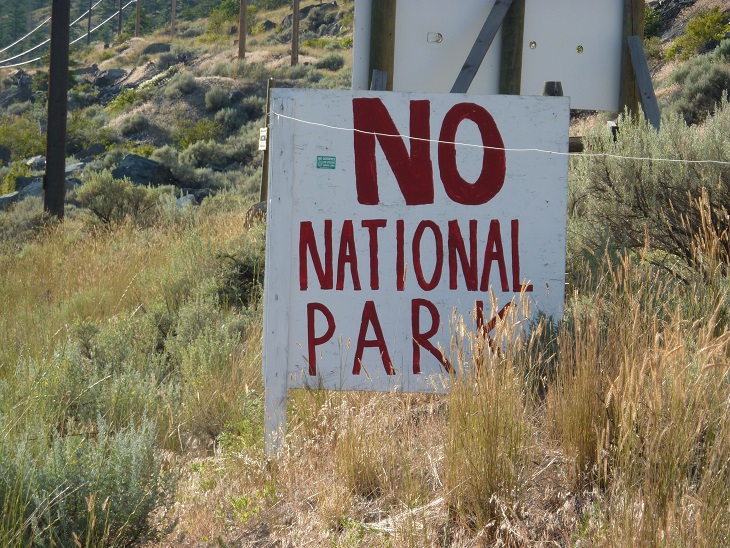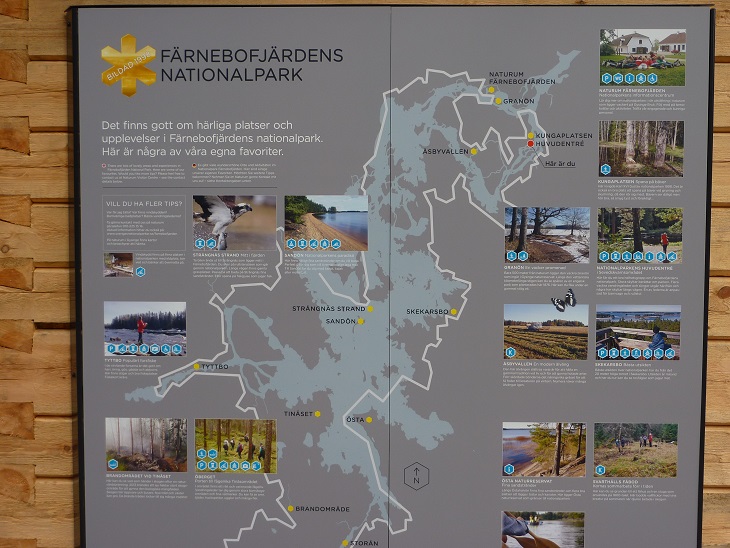
In response to Parkswatch blog on comparisons to the Vanoise, may I offer the following observations and note that while I believe we should broaden our horizons, it seems to me unwise to make assumptions on the reading and experiences of others.
Monbiot is a gifted, intelligent, campaigning journalist but I would tend to agree with Philip Hoare’s 2013 analysis that Feral’s “what ifs” are provocative; eccentric, even. I introduced Monbiot as a ‘agent provocateur’ – a label he freely acknowledged – at a CNPA run event in Boat of Garten in 2014 when his well-researched thoughts and ideas were enthusiastically discussed.
Monbiot’s writing is passionate, but for academic treatment of National Parks worldwide and insightful objective thinking I would also suggest reading authors like John Sheail (Nature’s Spectacle), Justin Farrell (The Battle for Yellowstone), Claire Campbell ed (A Century of Parks Canada), William Cronon ed (Uncommon Ground), Karen Jones & John Wills (The Invention of the Park), Claes Grundsten & Max Strom ( National Parks of Sweden), Ingo Mose (ed) Protected Areas and Regional Development in Europe: Towards a New Model for the 21st Century, and Michael Bess (The Light Green Society). They all explore the contradiction that is inherent in maintaining inviolable a place for people. A contradiction at the heart of the national park idea I have found in visiting parks from Banff to the Barrier Reef.
Parkswatch mentioned comparisons to the Vanoise National Park. Management of a park one tenth the size of the CNP within reach of Europe’s 700 million population – plus multiple overseas visitors will always be tricky. I was just north of the Vanoise at Christmas, in the Haute Savoie, skiing amid major mountain infrastructure.
Alpine and Nordic countries have grappled with the National Park concept, longer than Scotland, with mixed results. Although, Austrian National Parks, for example, only date from 1981 and, apart for the Hohe Tauern about the size of LLTNP, the other five are small, certainly smaller than the Vanoise.
Switzerland got its one and only national park in 1914. Sheail (2010) notes that ‘however much the Swiss Park had become one of the best researched and protected landscapes, science never obtained the standing nor resources to attempt a second’.

In 2016 on a high-level traverse on the Austrian Swiss border I overlooked many of the eight municipalities who had just voted against the creation of a second Swiss national park – Parc Adula – in the eastern Alps in a referendum after 16 years of research. The Swiss Parks Network acknowledged that the “combination of development and restrictions in the central zone of the park was obviously not welcomed with enthusiasm by a majority of people in the communes”. Swiss media reported that many people in the communes were against it gaining national park status because of the restrictions that would be placed on hunting, farming, tourism and other activities.
The French have long recognised the contradiction of free public access and preservation of anything in its natural state. At a defining international convention on conservation in 1933, held in London, the French argued strongly against the US National Park model. French National Parks now only cover 2% of the country and are zoned and regulated.
Interestingly, Lossiemouth’s own, Labour Prime Minister Ramsay MacDonald and a regular Cairngorms stravaiger, contributed a letter at the 1933 convention highlighting the link between the welfare of local populations and their natural environment. Labour also created the National Parks and Access to the Countryside Act 1949 – plus ça change, plus c’est la même chose.
Today, France, Switzerland, Austria have many more ‘Parcs naturels régionaux’ designated areas which, perhaps, are more relevant to the Scottish National Park model. Most years park staff and Board members from across the EU and Nordics attend the Europarc conference to learn from other park locations, 2016 was the Swiss Jura and 2018 being in the Cairngorms.
Bess (2003) in his book on environmentalism in post war France covers the Vanoise in some detail. Established in 1963, saved from ski development in 1969 by the intervention of President Pompidou, the Vanoise came under the new Ministry of the Environment, dubbed the ‘Ministry of the Impossible’ by its first Minister.
Bess says that ‘by the 1980s, the Vanoise was being overwhelmed by visitors leading to the imposition of strict zoning with severe restriction on human access of any sort in a core zone and a peripheral zone only open to walkers/skiers and bird watchers’.
What constitutes Vanoise ‘severe restriction’ to some – no dogs, no bikes, no paragliders, no fires, exclusion zones around nest sites, tightly controlled wild camping and bivvying may seem like ‘reasonable measures’ to the walker or skier attuned to wild places. After all, ‘impactful’ adventure sports are available elsewhere in the Alps. Yet, Isabelle Mauz in her 2014 paper Nature Conservation in Ski Country notes that ‘the Vanoise National Park seeks a tenuous balance between nature conservation and a booming tourism economy’. Maybe local communities can afford to support the National Park model because there are sufficient economic opportunities for them in the surrounding landscapes.

Despite the big open spaces stretching to the Arctic Circle, Nordic parks also have their challenges. Svein Ludvigsen, former Norwegian cabinet minster and County Governor of Troms is a great guy to have a few beers with and discuss National Parks in Norway and the Cairngorms, as I did on various visits.
The County Governor’s staff have responsibility for National Park management. But Svein had to deal with Sami reindeer herders, businesses, communities and farmers interacting with the Norwegian parks model. He didn’t always agree with his staff!
Like the CNPA, the Vanoise is managed by a Board (composed of representatives of the State, of local elected representatives, scientists and land users) appointed by the, wonderfully named, Minister of Ecological and Inclusive Transition. But its three aims have a greater protectionist focus than those in Scottish legislation.
- to contribute to the protection of natural, cultural and landscape heritage policy,
- to support and develop any initiative to subject knowledge and monitoring of the natural, cultural and landscape heritage,
- to contribute to the education of the public, the knowledge policy and respect for the environment.
Historian Cronon (1996) reflects that ‘there is nothing natural about the concept of wilderness’. Bess asks, as perhaps should we, ‘how to adjudicate between society’s needs and nature’s needs’? Are you a dualist – distinguishing between ‘authentic’ wildness and ‘fake’ (restored) wildness? Or are you a hybridity thinker – seeking a way to bind human activity to responsible co-existence with nature.
Hybridity clearly operates on a spectrum. The Vanoise has a much lighter human touch than, say, the pine forests of the Landes but both are still, as Bess suggests, museum like islands in a sea of intensive activity that is the French paysage. Both seem acceptable to the French.
Bess concludes with the title of his book, contending that, since the war, France has become a ‘light green country’ more comfortable with its environment. Has France adopted an approach, as Bess believes, that might become more typical in Western Europe and even for other burgeoning nations like the US and Brazil in future decades. Interestingly, the current French government Minister, Nicholas Hulot, responsible for National Parks, is described as an ‘environmental activist’ even although, through EDF, he also oversees French and British nuclear power and wind farms on the edge of the Cairngorms!
In Scotland what might this mean? The Monbiot Feral vision seems unlikely. Instead, we may like to consider if there a social and political appetite for the French model in Scotland. Or should we be better at making the case in defending what wild stuff we have, learning to show more eco -restraint, resisting the impulse to always re introduce, control or master and appreciating wildness in various hybrid forms?
Although its tempting to compare National Parks in different countries, a lot of caution is required as although they have the same name, they are often very different in terms of legislation. For example, both this & the earlier piece compare the Cairngorms NP with the Vanoise NP, but seem to only take into account the zone centrale of the Vanoise, which has borders carefully drawn to exclude all villages, towns, etc – it would be more realistic to compare Cairngorm with the Vanoise together with its periphery (L’aire d’adhésion).
I enjoyed reading your article, Duncan. It is thought provoking ad yes there is much that needs to be debated. In your summary you ask whether there might be the social or political appetite to consider the French model for a National Park in Scotland or a model which shows eco-restraint as a means of defending our wild areas. Regrettably I see little political appetite in our Scottish Government to debate these issues, instead I have real concerns that our Scottish Government would like to make the 4th aim of Cairngorms National Park (promotion of economic and social development – forget the sustainable bit!) the dominant aim of the National Park. This must be resisted at all costs. Instead we need to discuss what economic opportunities can be developed from:
– prioritising and encouraging re-wilding programmes,
– reducing management of our upland areas for grouse and deer and enable natural re-generation of these upland areas
– develop a greater focus in valuing and protecting the biodiversity of our lowland areas
We need to seriously consider a change in direction, otherwise we run the real risk of losing what little wild lands we have left and move towards our National Parks just being more like activity playgrounds.